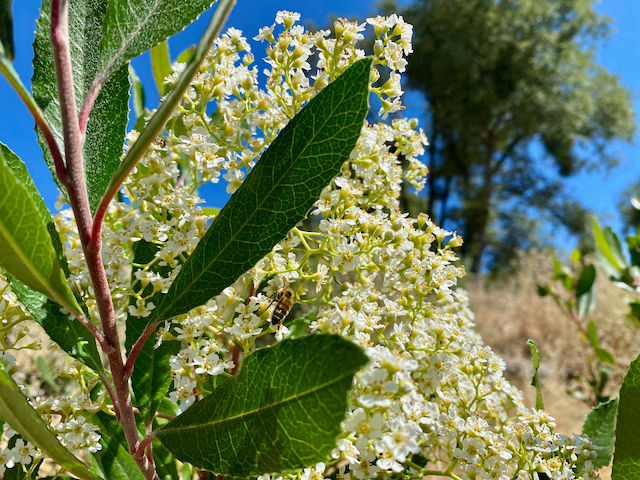Looking Skyward
- Sean Kriletich
- Sep 7, 2022
- 3 min read
A year ago this week, a legal notice in the local papers caused me to look skyward in search of answers to the exponentially increasing issues faced by spaceship Earth. PG&E’s notice stated that their ongoing “weather modification program… dispersing silver iodide aerosol into the clouds” had started in 1953 and would continue through May 31, 2026. The fact that aerosols could be deliberately dispersed into the atmosphere seemed like something out of a science fiction novel. I thought back to 1989, when the Montreal Protocol placed an international ban on consumer aerosol products, the same year that my experience in the Loma Prieta earthquake sparked a lifelong interest in earth sciences.
On October 16, 1989, I remember my grandfather laughing at my grandmother in their Fremont home when she declared “feels like earthquake weather today”. The next afternoon, my brother, mother, and I traveled across the Bay Bridge to take our Peugeot 504 station wagon to a mechanic in South San Francisco. We arrived just before 5pm and I stayed outside in the parking lot with Pal, our trainee Guide Dog for the Blind. Pal and I were looking up at the blue sky between the lines of metal buildings when we heard a burglar alarm far to the south of us. As the seconds ticked by, one alarm became a chorus, moving closer and closer.
I turned my curious gaze to the south, trying to determine the cause of the alarms. The streetlights began to bob like the masts of ships on a tempestuous ocean. The cars in the parking lot started to jump, slamming against each other as they rose and fell, launched by a two-foot-high wave rippling through the ground. I watched as the wave crumpled the lower part of the metal building and then the force knocked me over. I jumped to my feet just as my mother, brother and the mechanic rushed out of the building. We all stood there looking northward in awe as the wave sailed northward through the sandy fill of South San Francisco.
That afternoon we took the long way back around the Bay to my grandparents’ home in Fremont, where we were met by dishes broken on the kitchen floor and tales of a collapsed Bay Bridge and Nimitz freeway on the radio.
Eleven years later, I received a B.Sc. in Earth Science from the University of California at Santa Cruz. In that time, I had learned that my grandmother was not wrong about weather being a contributing factor to major earthquakes, although she may have been surprised to learn it was the sun’s weather, not our own. Almost all major earthquakes happen during the reduction in high-speed solar wind streams after a major solar storm. (https://d-nb.info/1231908211/34) These solar winds impact the Earth’s ionosphere in ways that influence the Aurora Borealis as well as terrestrial weather. (https://www.universetoday.com/611/connection-found-between-the-earth-and-space-weather/). It turns out that, 1989 had witnessed some of the largest solar storms in recorded history resulting in fantastic Aurora Borealis events as well as a complete power grid failure in Quebec, Canada https://www.nasa.gov/topics/earth/features/sun_darkness.html).
This week nineteen years ago, I again bore witness to the impact of solar weather on Earth when, around midnight the red glow of the Aurora descended at least as far south as my location in the Yosemite Valley (http://borealis2000.com/October2903Aurora.html). Back then I could not even countenance that humans could stimulate the ionosphere enough to create an aurora as HAARP did in 2013 by pumping high frequency radio waves into the ionosphere. As the Smithsonian reported, “This isn’t the first time the HAARP team has made an artificial aurora, but the new developments suggest they are gaining more control over the process.” (https://www.smithsonianmag.com/smart-news/lighting-up-the-arctic-sky-with-artificial-aurorae-28669741/). According to its website, the High-frequency Active Auroral Research Program, or HAARP, is a scientific endeavor aimed at studying the properties and behavior of the ionosphere. The research facility was transferred from the United States Air Force to the University of Alaska Fairbanks in 2015.
Dr. Rosalie Bertell, the late United Nations observer, is among several scientists who have linked earthquakes that are not related to solar winds to manmade disturbances of the ionosphere, specifically citing the 528 disclosed atmospheric atom bomb tests from 1945 to 1963, the 1963 launch of 350 million copper needles into ionospheric orbit and the experimental research of ionospheric heaters such as HAARP in Gakona, Alaska today (see works by: Dr. Rosalie Bertell, Dr. Nick Begich, Leigh Richmond Donahue).
Ideas that where once science-fiction are now well within the realms of scientific and military research. But does anyone really known what the consequences of playing with spaceship Earth’s ionospheric shield really are? Circling back to PG&E’s “weather modification program”, it’s worth noting that silver iodide is a patented fire accelerant and potent bactericide. Can we afford to continue to spray ozone-depleting, fire-accelerating aerosols into the clouds?
Only the future will tell. The future starts now!





Comentarios